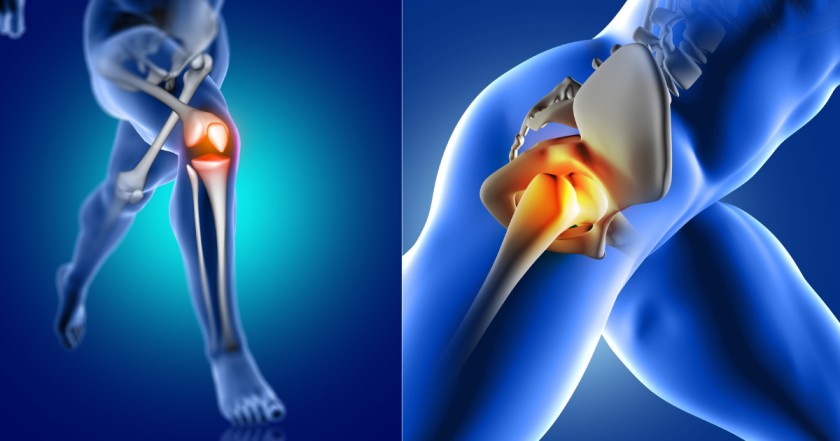Best Joint Replacement In Nagpur

Best Joint Replacement In Nagpur
When is Joint Replacement Necessary?
Joint replacement surgery is typically considered when other treatments, such as medications, physical therapy, or lifestyle changes, are no longer effective at managing pain or restoring function. Some of the most common conditions that may require joint replacement include:
- Osteoarthritis: A degenerative condition where the cartilage in the joint breaks down over time, causing pain and stiffness.
- Rheumatoid Arthritis: An autoimmune disease that causes inflammation and damage to the joint structures.
- Traumatic Injuries: Severe joint fractures or dislocations that cannot be repaired through other means.
- Avascular Necrosis: A condition where blood flow to the joint is compromised, leading to the death of bone tissue.
- Post-Traumatic Arthritis: Arthritis that develops after a previous joint injury.
Types of Joint Replacement Procedures
The most common types of joint replacement surgeries are:
- Hip Replacement: A procedure in which the damaged hip joint is replaced with a prosthetic. This is typically performed for severe osteoarthritis, fractures, or hip joint deformities.
- Knee Replacement: Also known as knee arthroplasty, this procedure involves replacing the damaged knee joint with an artificial one, often used for severe arthritis or injury.
- Shoulder Replacement: This surgery replaces the damaged shoulder joint with a prosthesis and is usually performed for rotator cuff tears, arthritis, or shoulder fractures.
- Elbow Replacement: This surgery replaces the elbow joint with an artificial prosthesis, commonly performed for severe arthritis or joint damage.
- Ankle Replacement: This procedure replaces the damaged ankle joint with an artificial one, often used in cases of severe arthritis or fractures.
The Joint Replacement Procedure
The process of joint replacement surgery typically follows these steps:
- Pre-Surgery Consultation: Your doctor will evaluate your medical history, perform a physical examination, and may order imaging tests (like X-rays or MRIs) to assess the extent of the joint damage.
- Anesthesia: Joint replacement surgery is performed under general anesthesia or regional anesthesia, depending on the joint being replaced and the patient’s medical condition.
- Surgical Procedure: The surgeon will remove the damaged joint surfaces and replace them with a prosthetic joint made of metal, plastic, or ceramic materials. The prosthesis is carefully aligned to restore proper joint function.
- Post-Operative Care: After the surgery, you will be monitored in a recovery room. Pain management and physical therapy will begin as soon as possible to help you regain mobility and strength.
- Rehabilitation: Physical therapy is an essential part of recovery, helping you regain strength, range of motion, and function in the newly replaced joint.
Benefits of Joint Replacement Surgery
There are several key benefits of joint replacement surgery:
- Pain Relief: One of the primary reasons for joint replacement is to eliminate or significantly reduce chronic pain, which improves overall quality of life.
- Improved Mobility: Joint replacement can help restore normal movement and flexibility, enabling you to perform everyday tasks and participate in activities you enjoy.
- Enhanced Quality of Life: Many patients experience significant improvements in their ability to walk, exercise, and enjoy recreational activities after joint replacement surgery.
- Long-Lasting Results: With advances in prosthetic materials and surgical techniques, modern joint replacements can last 15-20 years or longer, providing long-term relief from pain and disability.
- Faster Recovery: Newer minimally invasive techniques for joint replacement lead to smaller incisions, reduced blood loss, and faster recovery times compared to traditional surgery.
What to Expect After Joint Replacement Surgery
After your joint replacement surgery, your recovery will be an important phase in your treatment plan. Here’s what to expect:
- Pain Management: You will experience some discomfort after surgery, but it can be managed with pain medications and physical therapy.
- Hospital Stay: The length of your hospital stay will depend on the type of surgery and your recovery progress. Most patients stay in the hospital for a few days.
- Physical Therapy: Rehabilitation will begin shortly after surgery to help you regain strength and mobility. A physical therapist will guide you through exercises to improve flexibility and function.
- Gradual Return to Activities: While some patients are able to return to light activities within a few weeks, more strenuous activities (like running or heavy lifting) may take several months to resume.
- Follow-Up Appointments: Regular check-ups with your orthopedic surgeon will help monitor your recovery and ensure that the new joint is functioning properly.
Risks and Complications of Joint Replacement
Like any surgery, joint replacement comes with some risks, though serious complications are rare. Potential risks include:
- Infection: A possible risk following any surgical procedure, though antibiotics are typically given to reduce this risk.
- Blood Clots: There is a risk of developing blood clots in the legs after surgery, but this risk can be minimized through medications and movement exercises.
- Implant Loosening: Over time, the artificial joint may loosen or wear out, requiring a revision surgery.
- Nerve or Blood Vessel Damage: Though rare, damage to nearby nerves or blood vessels can occur during the surgery.
Choosing the Right Joint Replacement Surgeon
Selecting the right surgeon for joint replacement is crucial to achieving the best possible outcome. Here are a few tips to help you choose the right orthopedic surgeon:
- Experience and Specialization: Look for a surgeon who specializes in joint replacement surgery and has experience with the specific type of joint replacement you need.
- Reputation and Patient Reviews: Research the surgeon’s reputation by reading patient reviews and asking for recommendations from trusted healthcare providers.
- Technology and Facilities: Choose a surgeon who works in a hospital or clinic with state-of-the-art equipment and up-to-date surgical techniques.
- Clear Communication: A good surgeon will thoroughly explain the procedure, recovery process, and any potential risks involved.
